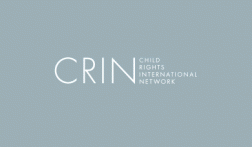Download the UN Study: English | Francais | Espanol | Arabic | Russian | Chinese
The Study
The United Nations Secretary-General's Study on Violence against Children aimed to paint a detailed picture of the nature, extent and causes of violence against children, and to propose clear recommendations for action to prevent and respond to it. This was the first time that an attempt was made to document the reality of violence against children around the world, and to map out what is being done to stop it.
Key findings of the Study
The Study found that violence against children is present in almost all aspects of a child’s life: in their home, in school, on the street, at work, in institutions, and in detention. Children are beaten tortured, sexually assaulted, or even murdered by the very individuals responsible for their care, and many forms of violence are often viewed as socially acceptable.
Read more: Key findings / Summary of the Violence Study / Guiding principles / Recommendations / Forms of violence
Background
In 2000 and 2001 the UN Committee on the Rights of the Child, organised two discussion days on violence against children. The General Assembly subsequently requested in Resolution 56/138 an in-depth study on violence against children.
In 2003 Professor Paulo Sergio Pinheiro was appointed Independent Expert to lead the Study on behalf of the Secretary-General. This was the first comprehensive global research project by the UN on all forms of violence against children, and combined human rights, public health, and child protection perspectives.
The aim of the study was to research, report, and make recommendations on violence against children in five settings: the, home and family, schools, care and justice systems, the workplace and the community. What it found was shocking levels of violence affecting the lives of children in all countries.The Violence Study was a collective process that involved consultations in nine regions and dozens of expert meetings, involving thousands of people from governments, children, civil society and a number of UN agencies.
The Study was presented at the GA in 2006 and was accompanied by a book World Report on Violence Against Children. The Study provided 12 Recommendations and proposed the establishment of a Special Representative to the UN Secretary General on Violence Against Children (SRSG).
Child Participation
A key feature of the regional consultations was the direct involvement of children, who in each case met in advance with adult facilitators to plan their input and were then involved in working groups and plenary sessions, often presenting their own declarations. In each region, the children met informally and privately with Paulo Pinheiro.
View information by region
Guiding principles
Professor Pinheiro stated in the reports that he was guided by the following principles, which are reflected in the recommendations:
- No violence against children is justifiable. Children should never receive less protection than adults;
- All violence against children is preventable. States must invest in evidence-based policies and programmes to address factors that give rise to violence against children;
- States have the primary responsibility to uphold children’s rights to protection and access to services, and to support families’ capacity to provide children with care in a safe environment;
- States have the obligation to ensure accountability in every case of violence;
- The vulnerability of children to violence is linked to their age and evolving capacity. Some children, because of gender, race, ethnic origin, disability or social status, are particularly vulnerable;
- Children have the right to express their views, and to have these views taken into account in the implementation of policies and programmes.
(Paulo Sérgio Pinheiro, UNSG’s Study Report, para. 93)
Recommendations
The UN Secretary General’s Report to the General Assembly includes a set of 12 “overarching” recommendations. There are also more detailed recommendations, applying to the five settings of childhood in which violence occurs – home and family, schools, care and justice systems, the workplace and the community.
These are the overarching recommendations
- Strengthen national and local commitment and action
- Prohibit all violence against children
- Prioritise prevention
- Promote non-violent values and awareness-raising
- Enhance the capacity of all who work with and for children
- Provide recovery and social reintegration services
- Ensure participation of children
- Create accessible and child-friendly reporting systems and services
- Ensure accountability and end impunity
- Address the gender dimension of violence against children
- Develop and implement systematic national data collection and research
- Strengthen international commitment
Other recommendations cover regional and international follow-up, including the proposal that a Special Representative to the UN Secretary General on Violence against Children should be appointed – see below.
The urgency of acting on the Study’s recommendations is underlined throughout Professor Pinheiro’s reports. Three recommendations are singled out and time-bound goals set for them:
- By 2007: integrating into national planning process measures to prevent and respond to violence against children, including the identification of a focal point, preferably at ministerial level;
- By 2009: prohibiting all violence against children by law;
- By 2009: initiating a process to develop reliable national data collection systems.
Partners
The Independent Expert and the Study Secretariat were supported by three key agencies: the Office of the United Nations High Commissioner for Human Rights, UNICEF and the World Health Organisation (WHO). Professor Pinheiro appointed a multi-disciplinary Editorial Board of experts to advise him and was also supported by an Advisory Panel of non-governmental organisations, including children and young people.http://www.crin.org/fr/node/33417

